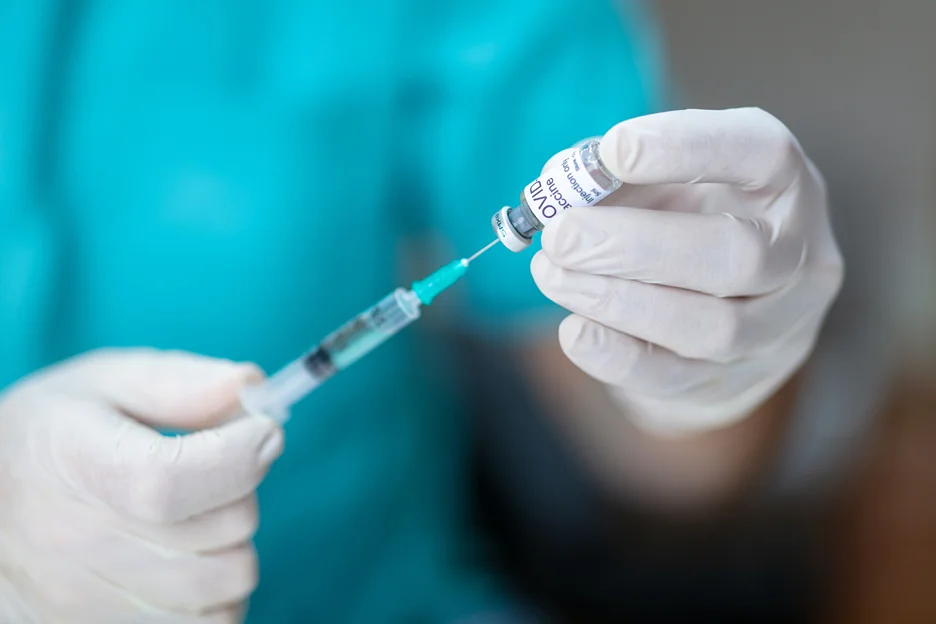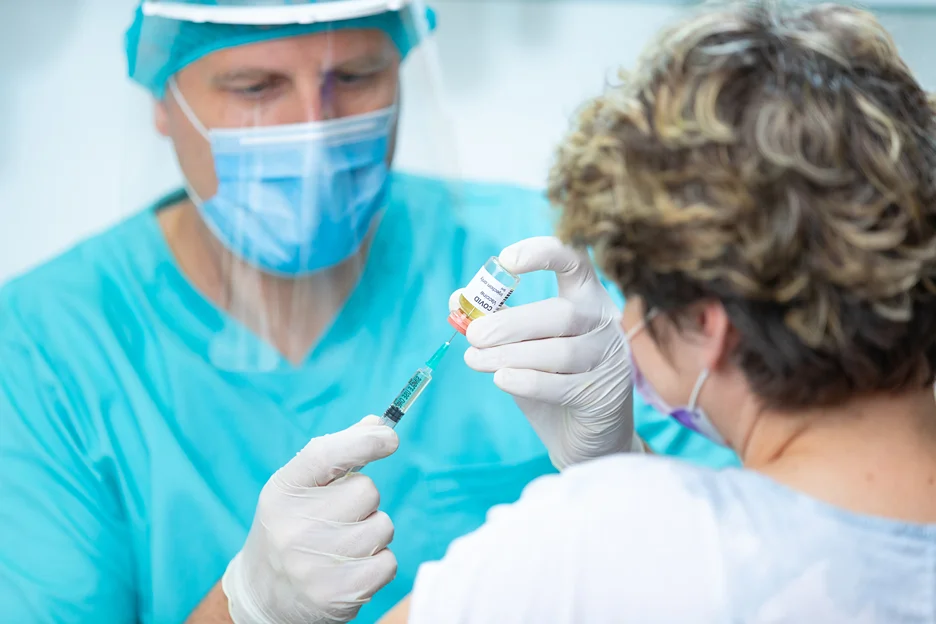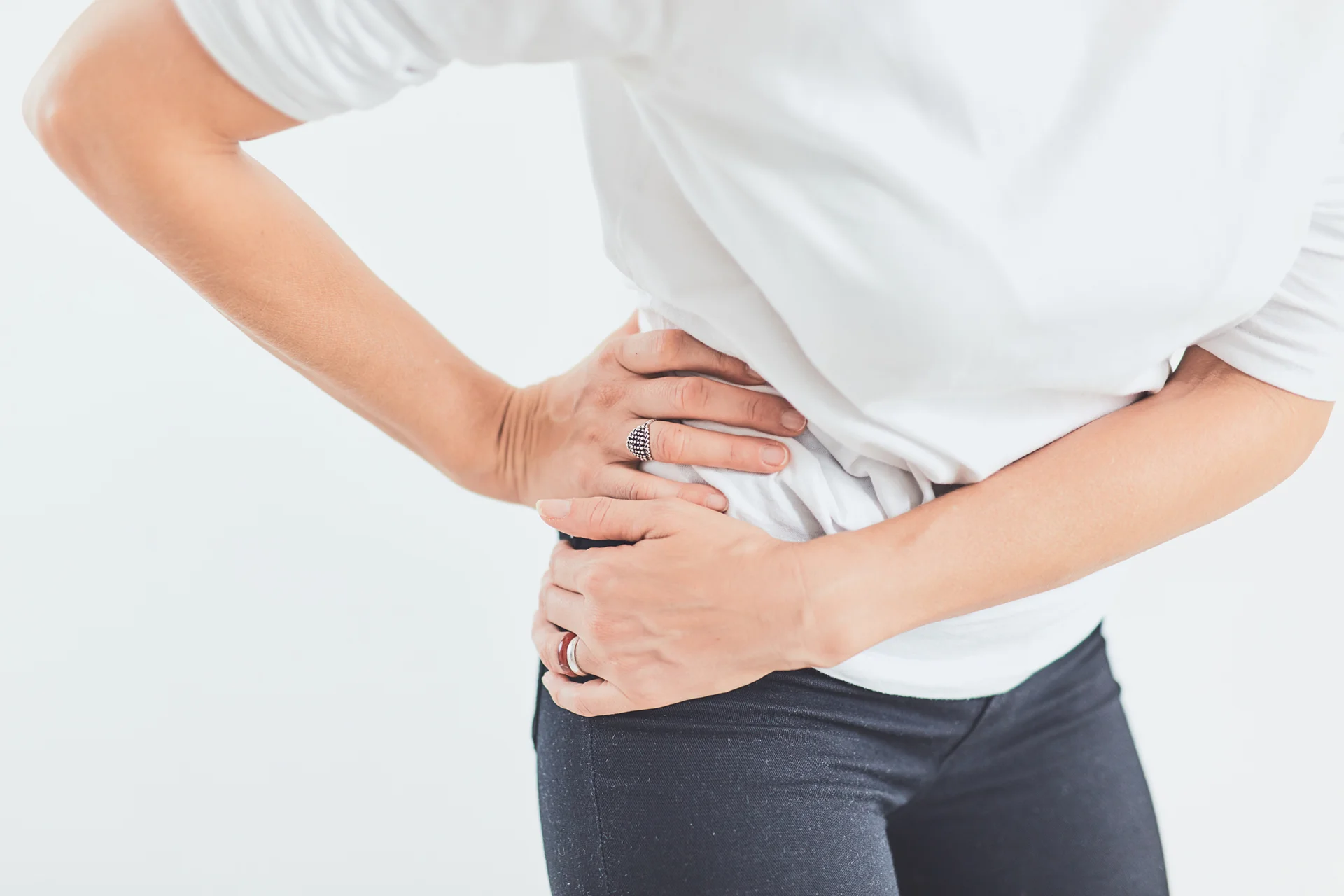How the COVID-19 Vaccine Can Affect Nerve Pain
A shocking, tingling pain shoots down your leg, causing you to wince with every step. Numbness and muscle weakness makes it difficult to carry out your daily activities. You start experiencing this intense sciatic nerve pain shortly after getting the COVID-19 vaccine. Could the two be connected?
Reports of sciatica symptoms arising soon after COVID-19 vaccination have emerged anecdotally. But is there any scientific evidence substantiating a link between the vaccine and sciatica? Or is this temporal relationship purely coincidental?
Here at Kaly, we completely understand how nerve and back pain can disrupt your daily life. We also know that you want to make the best decisions for your health during this public health crisis.
Let’s take a closer look at what sciatica is, its common causes, and objectively examine the potential role of COVID vaccinations in triggering sciatic nerve inflammation and pain.
What Exactly Is Sciatica and What Typically Triggers It?

Sciatica is characterized by sharp, shooting pain that runs along the sciatic nerve pathway. This nerve is the longest and widest single nerve in the human body, extending from the lower back down through the hips and buttocks, along the back of each leg to the feet.
Given its length, inflammation or compression anywhere along the sciatic nerve or its nerve roots can trigger symptoms. Common causes of sciatica unrelated to the COVID vaccine include:
- Herniated or Bulging Disc: Disks between the vertebrae of the spinal column act as cushions or shock absorbers. A herniation or tear in an outer disc wall can cause the gel-like interior to bulge out and press on the adjacent sciatic nerve.
- Degenerative Disc Disease: Discs can wear down or become damaged with age, which may lead to tears or cracks that irritate the sciatic nerve.
- Spinal Stenosis: Narrowing of spaces within the spine, often due to arthritis or injury, can pinch or trap the sciatic nerve.
- Piriformis Syndrome: The piriformis muscle located deep in the buttocks spasms or tightness, and causes pressure on the sciatic nerve.
- Isthmic Spondylolisthesis: A vertebral slippage that places pressure on the nerve.
- Pregnancy: Weight gain, hormonal changes, and baby positioning can stress the sciatic nerve during pregnancy.
- Injury or Trauma: Direct nerve injury from a car accident, fracture, or muscle overuse from sports can instigate sciatica.
- Tumors or Growths: Though rare, abnormal tissue growths on the spine or pelvis may irritate the sciatic nerve.
- Diabetes: Uncontrolled blood sugar levels associated with diabetes can lead to nerve inflammation.
The underlying biomechanical causes of sciatica involve some degree of compression, tension, or irritation of the nerve itself. Could the COVID vaccine induce inflammation that indirectly presses on the sciatic nerve?
Next we’ll analyze the theories behind how the vaccine could potentially trigger or worsen sciatica symptoms.
Examining Possible Links Between the COVID Vaccine and Sciatica

At this point, there is limited scientific evidence substantiating a direct causal relationship between COVID-19 vaccination and subsequent onset of sciatica. Much of the data is anecdotal.
However, a few plausible theories exist for how the vaccine could exacerbate sciatic nerve pain:
Inflammation Response
It’s well known that the mRNA vaccines (Pfizer, Moderna) can produce temporary side effects like fever, muscle soreness, joint pain and stiffness as the immune system reacts to the vaccine.
One theory posits that this inflammatory response could irritate nerves or aggravate existing nerve issues like sciatica or carpal tunnel syndrome, either through direct inflammation or swelling that presses on nerves.
However, most symptoms after vaccination last only a day or two, while sciatica flares reported after the shot can persist for weeks or months. So more factors are likely at play.
Activation of Latent Conditions
Some researchers speculate that in individuals predisposed to sciatica due to existing spinal pathologies like herniated discs, the vaccine’s immune and inflammatory response could potentially serve as the tipping point that triggers dormant nerve issues.
Much like how people with latent autoimmune disorders experience disease flares after certain immunizations. More studies are needed to ascertain the viability of this theory.
Coincidental Timing
With a large vaccinated population, some cases of sciatica after the shot could simply be coincidental. Sciatica has numerous causes like aging, obesity, arthritis, injury, which happen independently of vaccination. Without controlled trials, it’s difficult to isolate vaccination as the definitive cause of subsequent sciatica.
Currently no data shows individuals who receive the vaccine have higher rates of sciatica compared to the general public. But more research is warranted to conclusively determine vaccination’s relationship to sciatic nerve pain. Next we’ll go over the possible symptoms to look out for if sciatica appears post-vaccination.
What Symptoms Might Indicate Sciatica After Vaccination?
If new or worsened sciatic nerve pain arises in the days to weeks following your COVID shot, what symptoms might present? Here are some signs to watch for:
- Radiating lower back pain extending through the glutes and down one or both legs – the hallmark symptom
- Sharp, stabbing pain or unpleasant tingling sensations down the leg that may worsen with sitting, standing, sneezing, coughing
- Muscle weakness or difficulty moving the leg or foot
- Numbness or pins-and-needles feeling in the leg, foot, or lower back
- Hip or buttock pain
The timing and severity of symptom onset varies considerably among reported cases of post-vaccine sciatica. Some experience immediate sciatic pain within hours of vaccination.
Others have a delayed onset a week or more after the shot. Symptoms can last days to months. Pain levels range from irritating to severe life-altering pain. Each individual responds differently.
How Should I Manage Sciatica Symptoms After the COVID Vaccine?

If your doctor confirms you’re experiencing an acute sciatica flare, here are some recommendations for managing symptoms as you recover:
- Use OTC anti-inflammatories like ibuprofen to reduce inflammation irritating the nerve. Apply ice packs wrapped in towels directly on the painful area for up to 20 minutes to reduce localized swelling.
- Get plenty of rest and avoid strenuous activities that aggravate the sciatica.
- Ask your doctor about prescription medication options for pain relief, like gabapentin or muscle relaxers. In severe cases, a steroid injection near the irritation site may help.
- Gently stretch and massage the glutes, hip flexors and back muscles. Practice sciatica exercises like knee-to-chest or pigeon pose under guidance of a physical therapist or specialist.
- Use ergonomic cushions or supports in your seat and workstation to take pressure off the lower spine. Maintain proper posture and lifting techniques.
- See a chiropractor for spinal adjustments or an acupuncturist for pain relief, if you prefer alternative therapies. But clear it with your physician first.
- Reach out to a therapist if chronic pain creates depression, hopelessness or disrupts your quality of life. A multidisciplinary approach helps recovery.
Seeking urgent medical care is critical if you experience: loss of bowel or bladder function, progressive leg weakness, fever along with sciatica, or pain not improving with treatment. These may indicate a serious spinal condition requiring emergency evaluation.
How Can I Reduce My Risk of Sciatica After COVID Vaccination?
Here are some proactive steps you can take to potentially minimize sciatic nerve irritation following your vaccination:
- Stay hydrated in the days surrounding your appointment to avoid inflammation. Drink extra fluids.
- Take over-the-counter anti-inflammatories like ibuprofen or naproxen sodium for 24-48 hours after you receive your shot per your doctor’s instructions. This can help mitigate inflammation.
- Avoid strenuous physical activities, exercise, and sports that jar or strain your back for at least 72 hours post-vaccination.
- Apply a cold pack wrapped in a towel to the injection site to reduce localized inflammation.
- Sleep on your side with a pillow between your legs for proper spinal alignment and nerve decompression.
- Use ergonomic cushions for your car seat and office chair to take pressure off your lower back.
- Perform gentle sciatica stretches twice a day. Try yoga poses like knee-to-chest, child’s pose, or a figure 4 stretch. Start slowly.
- Get a massage to relieve muscle tightness in the hips, glutes, and piriformis that can contribute to sciatic pain.
- Maintain proper posture and body mechanics with lifting, carrying and daily activities. Avoid hunching over.
- Watch your calcium and vitamin D intake, as deficiencies are linked to nerve problems. Consider supplements.
- Quit smoking and lose excess weight, which can decrease inflammation and take pressure off the spinal discs.
If you have a history of chronic back problems or sciatica, consult your healthcare provider before vaccination about strategies to minimize flare up risk according to your specific condition.
With some basic preparation and diligent self-care, you can lower chances of provoking sciatic nerve aggravation following your COVID vaccine. Stay observant of any unusual symptoms that develop afterwards and follow up with your doctor. More research is still needed, so reporting your experiences is valuable for others.
The Takeaway on Covid Vaccines and Sciatica

At Kaly, we believe strongly in the power of personal choice when it comes to your health and wellbeing. We also trust the rigorous science and unanimous guidance behind the COVID-19 vaccines for reducing risk of infection and transmission.
While scientific evidence remains inconclusive, some people do seem to develop temporary or ongoing sciatica symptoms following COVID-19 vaccination. It’s possible that the vaccine’s inflammation response could exacerbate existing lower back issues or injuries in certain individuals predisposed to sciatic nerve irritation. However, pinpointing vaccination as the definitive cause is extremely difficult on an individual basis.
